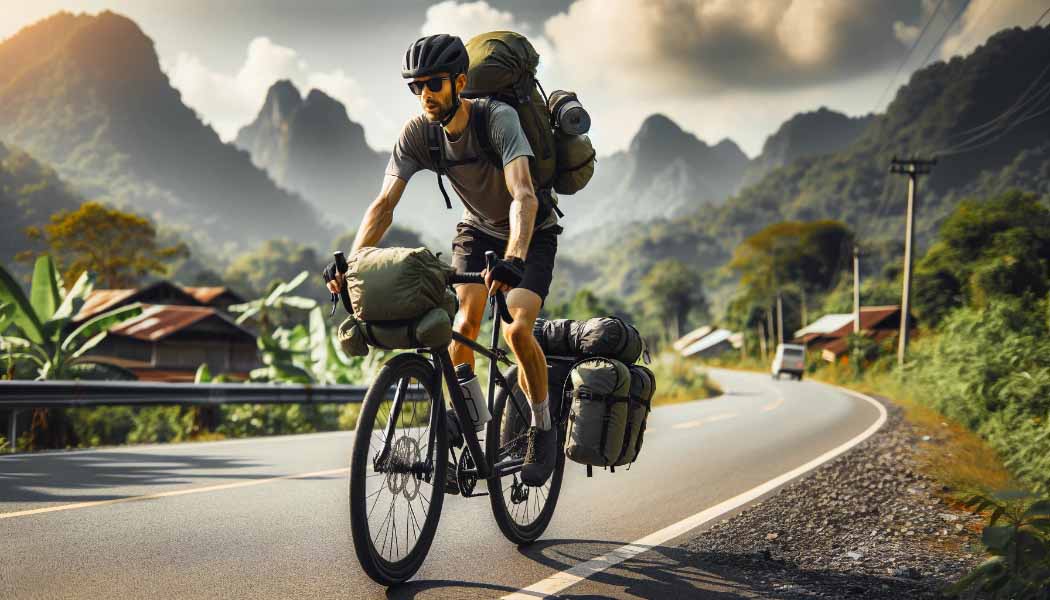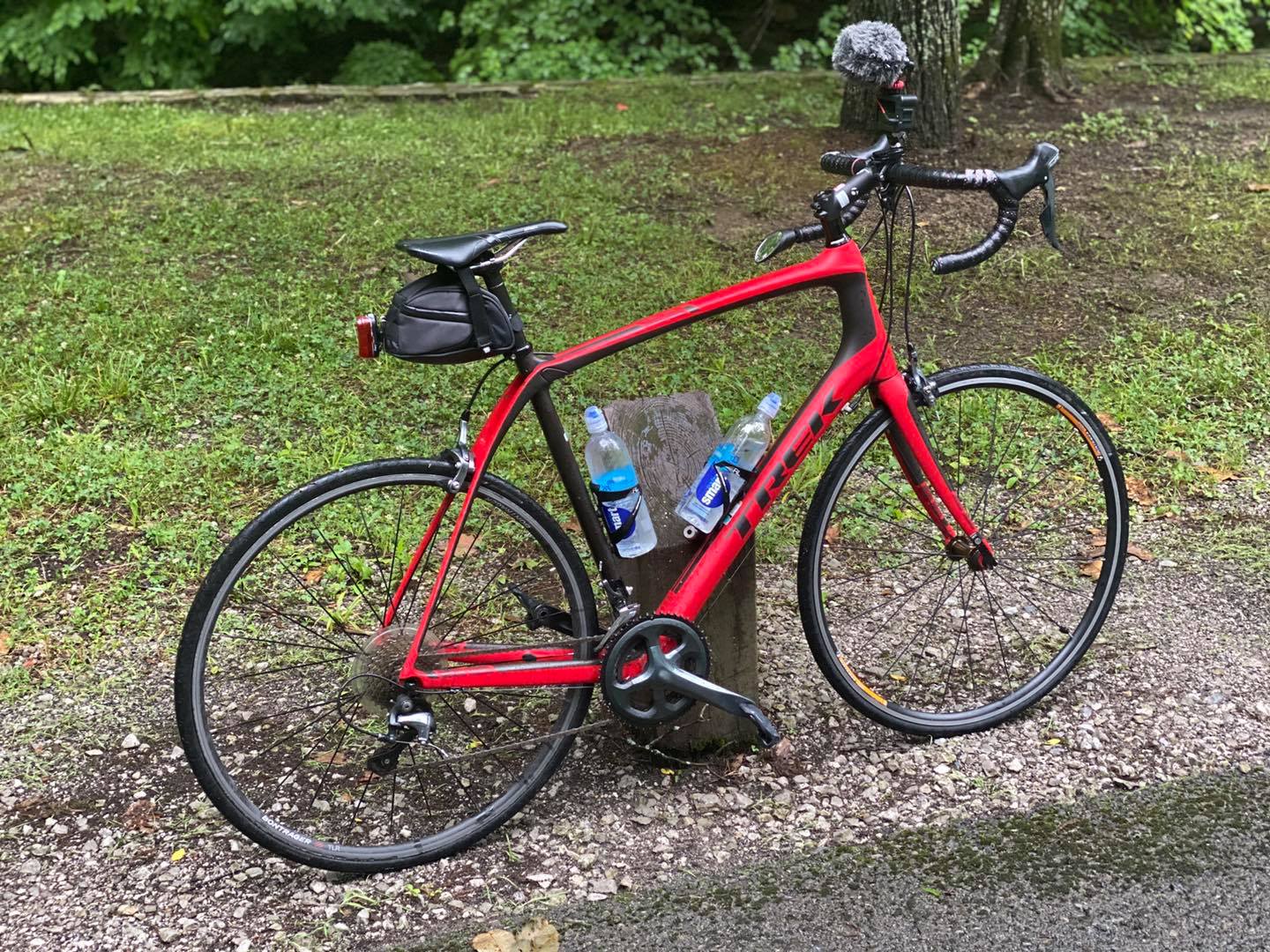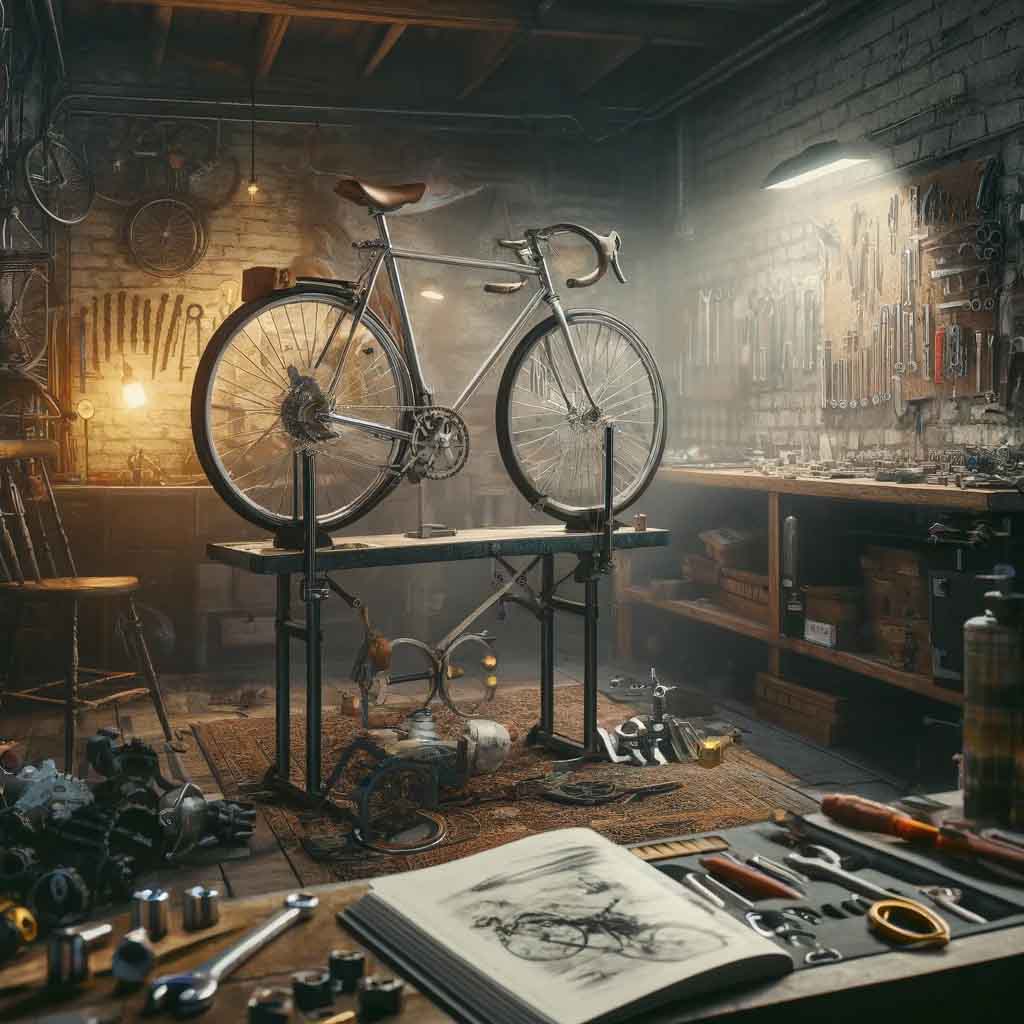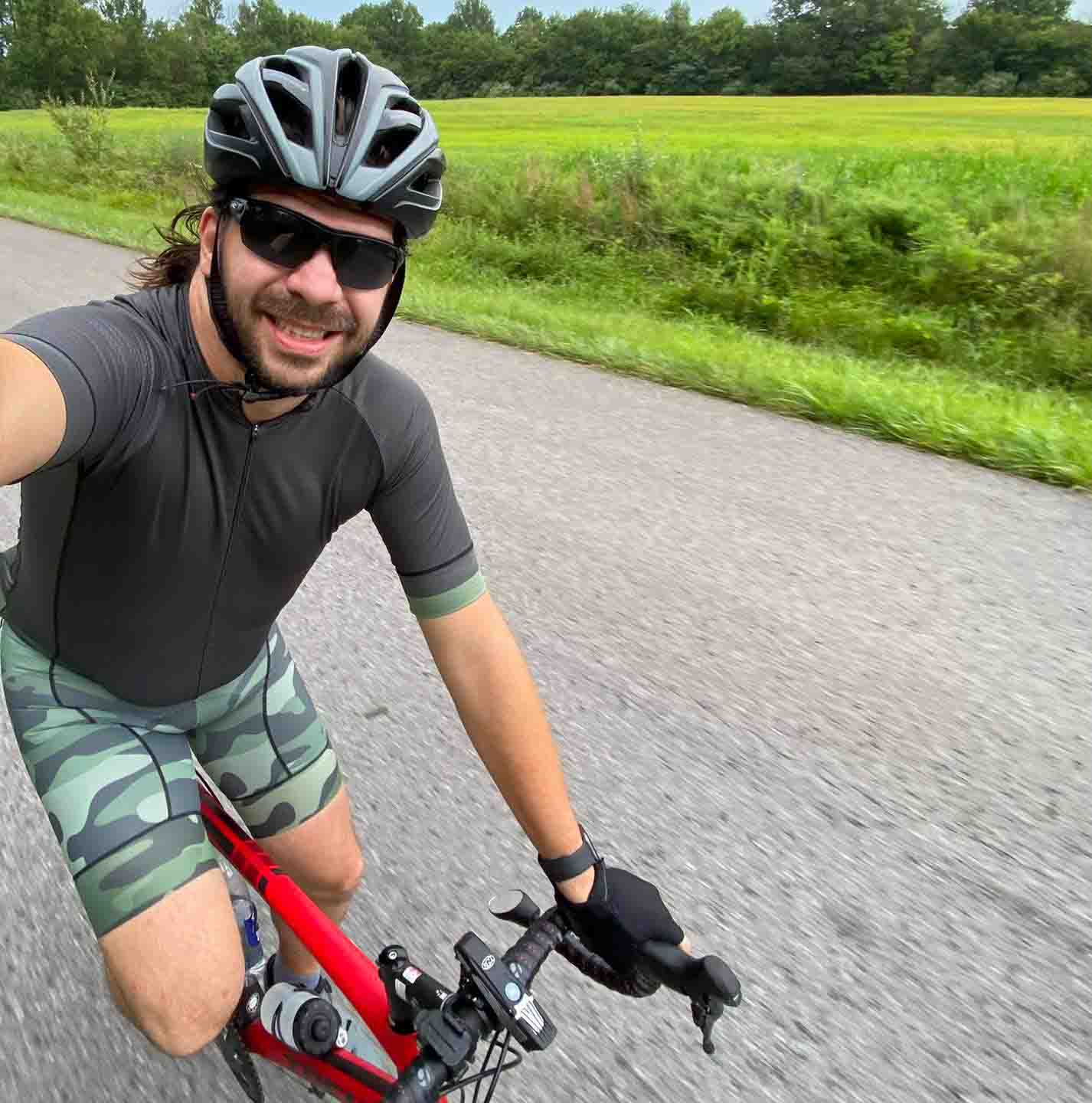How to Start Bike Touring: A Guide to Your Perfect Bike Tour
Bike touring is a great way to take cycling and adventure and mash them together.
I’ve talked about bikepacking, which is like adding cycling, hiking, and camping in one, but now I want to show you how to go on a bike tour.
A bike tour is different because you’re riding primarily on paved roads and with traffic. You might be on a road bike, hybrid, or even a touring-specific bike. Bike touring is more about riding on the road, going through towns, and typically seeing multiple states or counties.
Bike touring is a great way to enjoy cycling even more and see the world, depending on how far you’re willing to ride.
In this guide, I’ll show you how to get started with touring so that you can experience the adventure when you’re ready to.
Why Start Bike Touring?
There are many different reasons to start bike touring, and you’ll likely enjoy most, if not all, of the reasons to start doing it.
For starters, you can explore the world touring on your bike. I follow many cyclists who travel the country and even the world on two wheels. You get to see things from a different perspective and at a slow enough pace that you know what’s going on versus quickly passing by in a motor vehicle. If you’ve ever wanted to see your country or even the world, you can really see it by bike.
Vacationing can be pretty expensive. Flights, resorts, and cruise lines can be in the upper thousands or more. Bike touring is an alternative vacation or holiday activity. It typically costs less than a quarter of what most vacationers pay for cruises, road trips, and resorts. If you’re looking to save money but still want to get away, consider doing it by bike.
Bike touring might be a better option for you than bikepacking. Bikepacking is mainly in the woods and camping out in nature. Not everyone gets into that. Bike touring is more about touring cities and the countryside and staying with hosts. If you’re not as into nature as the bikepacker is, touring on the road is probably going to be ideal for you.
Touring allows you to experience culture at a reasonable pace. Each city, state, country, and area has its own unique culture about it. When you’re slowly pedaling through these areas, you get a chance to completely see the culture around you and even often experience it firsthand. It seems like people just love seeing cyclists coming through, and they want you to experience their culture and life in the process. Bike touring gives you the unique opportunity to learn new things about the world.
Touring is a great way to feed your creative side. Maybe you’re a writer, blogger, video creator, or even a podcast host. Bike touring gives you an experience worth recording and sharing with the public. So, take notes or even bring a video camera with you. Create something that everyone can see and share with the world. If you want to learn more about blogging, check out my blog all about blogging. You can also use websites like Crazy Guy on a Bike to showcase your touring experience.
Bike touring might be your calling, that is if any of the reasons above stand out for you.
Plan Your Bike Tour
To thoroughly enjoy bike touring, you want to make sure you properly plan for it.
Try to plan for everything. Plan the ride based on scenic views, traffic, and road conditions, the distance you wish to ride each day and for the entirety of the tour, and, of course, the elevation of your ride. Use various websites for this, including Google Maps, state-based road conditions reports, construction reports, and any platform where you can draw out your bike route.
You also want to plan where to lodge, eat, and shop. While bike touring, it’s important to have a place to sleep each night. You may need to make reservations ahead of time in order to secure a place to stay. You can choose to camp, stay in a cabin, go through a lodging service like Airbnb, choose a Warm Showers host, or even stay at a hotel. You should also plan for resupply stops for food, water, and supplies, as well as places to have a full meal.
Try to determine the cost of your bike touring trip. While bike tours typically cost way less than most vacations, they still come with some sort of budget need. You’ll need to pay for lodging, food, and supplies. You need to have cash on hand just in case a bike breakdown happens or you want to do something that costs money. Don’t rely completely on credit cards. Not everyone takes them. Have some cash with you, just in case.
It’s important to budget your money and trip. If you wish to save money, try to plan on using cheaper alternatives. This can all be done during the planning process. It becomes a lot more difficult to budget during a spur-of-the-moment search while you’re already out there on your bike. You just don’t have the time for that.
Plan for the season. What time of the year are you going to go bike touring? Is it a busy season with breaks, vacations, and travel for everyone else? This could impact lodging and road conditions. It’s ideal to know what the season will bring you in terms of the pros and cons.
You also want to plan for the weather and surprise weather that can occur for that season. It’s important to understand what sort of weather conditions you’ll face on your bike. You need to be sure so that you can pack the right gear. The last thing you want is to be freezing cold on your bike and have nothing to make you warmer. That can lead to serious injury or even death if you’re not careful.
Planning is essential for any bike touring adventure. It will ensure a positive, safe experience that you can talk about for years to come.
Bike Touring Gear
It’s important to bring the proper gear to ensure that you have a great bike tour.
The first thing you need to decide on is what bike to take. There are a few different options for bike touring. You can use a road bike, gravel bike, hybrid-style bike, or even a bike specifically designed for bike touring. You should choose a bike based on the terrain you’ll be riding on and the capacity of how much gear you can put on it. For example, carbon bikes are nice and light, but they can’t hold as much extra gear as an aluminum bike can.
You need to get the right bags and waterproofing materials for your bike. You can get a special bag for just about any position or portion of your bike frame. Most bike touring riders will have panniers over their rear tires, a frame bag, and a bag over their handlebars. Some modern tourers like to use bikepacking methods with oversized saddle bags instead of panniers. Just make sure all your gear is protected from the rain and cold.
You need to bring and wear a helmet. This is especially true if you will be riding on the road. It should be a standard bicycle helmet. Be smart and wear a helmet.
Make sure your bike has lights and a way to charge your batteries or change them out as needed. You should have a bright, clear light on the front and a bright red light on the rear of your bike. Keeping your lights on during the day will help keep you more visible on the roadway, too. Using lights any time you’re on the bike is a good idea.
Make sure you bring plenty of sources of navigation. If you know how to read paper maps and a compass, you can bring them. If you have a smartphone, you should also have some sort of navigation app. A good bike computer should also be able to help you with navigation.
It’s a good idea to have some kind of shelter. Even if you plan to stay in hotels and cabins your entire trip, something could happen, and you might be forced to sleep in nature. They make very lightweight tents, or you could even just bring a tarp with some paracord to make a simple shelter.
Make sure you bring plenty of food, hydration, and snacks. You’ll want to be able to eat, drink, and snack on your bike as well as off your bike. Bring a water filter with you in case you get into areas with no resupply points. Bring electrolytes with you to keep you hydrated properly. You should also bring a camp kitchen with you so that you can make food anywhere you’re at. A simple cooking pot, pocket rocket stove with fuel canister, and spork are all you really need.
Bring any other gear you might need, including personal hygiene items, toilet paper, and a first aid kit. Make sure you bring the required charging cords and extra batteries for your electronics. You should also bring fuel power bricks so you can keep your stuff charged. Bring medicine, extra cash, credit cards, ID, and your passport if needed.
It’s an idea to bring extra clothing. You should consider 2-4 cycling kits and clothes to wear off the bike. Wash your previously used kit and clothes in the sink and let it air dry by attaching them to your bike as you ride the next day. Don’t wear the same cycling kit over and over again, as it can cause you all sorts of hygiene problems.
It’s a good idea to bring something you can use to defend yourself with, just in case. Only bring a firearm if you’re legally allowed to carry one in every area you’ll be riding in. Alternative defense tools include tasers (where legal), pepper spray, bear spray, and knives. In general, it’s a good idea to have a knife just in case you need it.
Be sure you bring extra bike maintenance gear. This would include an extra tire, tubes, a portable air pump, a patch kit, duct tape, zip ties, and tools used for fixing your bike and gear.
Having the right gear will help you ensure that you have a very good bike touring adventure without too much worry about something going wrong.
Train for Bike Touring
Bike touring isn’t just something you can do on your bike. You have to train for it, or it might be a disaster.
You need to first get into bike tour shape. Do this by riding. But don’t just go on any bike ride. Try to match the miles you plan to ride each day and pack your bike down. That’s the most important thing to do. Ride your bike with all your gear on it so that you know how it’s going to feel. Keep riding until you get used to it, and you think you’re ready, but gradually increase and get better rather than trying to do it all at once.
Focus on improving your mileage in one day. If you can ride 100 miles in one day, how many miles can you ride the next day? Once you’re able to ride many miles a day for several days in a row, you’ll be in better bike touring condition. However, you need to rest, so don’t overdo your tour training.
Bike touring is also a mental workout. You need to get your mind right about it. Meditate on the idea of being on your bike for a long time and every day. If your mind isn’t right while you’re touring, you’ll probably have a very tough time completing your ride.
You got to have rest and recovery when touring on your bike. During training, you need to take rest and recovery days where you’re not riding. You can do active rest days where you hike or swim instead. You should also do weight training and work on your core, too. While touring, it’s important to take rest days or zero days and do nothing on the bike.
Consider doing shorter bike tours before you take on longer ones. For your first tour, just do a simple two-day tour. Ride one day, sleep, and ride back the next. After that, do a four-day tour or a week tour. Gradually increase your touring abilities. Don’t try to jump on your bike for a ride every day for several months without knowing what it’s going to be like beforehand.
Bike touring is a great adventure, but it’s not easy. You must train your body and your mind to complete it.
Bike Touring Safety
Your safety while bike touring should be your main priority over anything else.
If you can do it, try not to bike tour alone. It is a lot more fun when someone else or a group of riders can enjoy bike touring together. It’s safer with more than one person. However, solo riding can be an adventure as well, and you can usually set your own pace. If you do tour alone, at least tell someone where you’re going and check in with them daily so that your whereabouts can be known.
If you’re new to bike touring and you don’t want to go alone but have no one to go with, you can always try an organized touring outfitter. This is a company that will guide you on your bike tour. It usually costs money, and these tours can be expensive, but everything is typically covered, including lodging and dining, which is a big plus.
Anyone going on a bike tour needs to be traffic safety orientated. You’ll be cycling with motorists. This will elevate your risk factor and put you in line with hazards. You need to fully understand the rules of the road for cyclists and always be on the defensive. Assume no motorist can see you. Abide by all traffic rules, signals, and signs at all times. Use hand signals for turning. Practice riding with traffic in low-traffic areas close to home before you go bike touring.
There are many hazards on the road aside from motor vehicles. You need to be constantly checking the path in front of you and remain vigilant about it. Look out for uneven terrain, potholes, and debris that could puncture your tires or cause you to wreck. Be cautious of dogs, cats, and even wild animals that could be crossing the road. Look out for flooding, closed roads, and areas that will be too hazardous for you to bike at. Be willing to take an alternative route, which is something you should plan for before you go bike touring.
Nighttime cycling should be avoided at all costs. However, if you must ride at night, you need to increase your safety awareness. Make sure you’re wearing reflective clothing and that your lights work and are very bright. Try to use roadways that have less traffic and always be on guard.
Ensure that you get a checkup on your bike maintenance before you go bike touring. Take your bike to a local bike shop and get it tuned up. Tell the shop workers your plans to bike tour and that you need them to make sure your bike is tour-ready. A sturdy bike will last a while and help ensure you can safely ride on the road for long distances.
As I stated before, tell someone where you’re going and update them daily. Create an itinerary for your bike tour. If something happens to you and you don’t check in or return home, your contact person will have the tools and resources to contact the proper authorities. Someone should know where you are at all times during your bike tour.
Consider cycling and travel insurance for bike touring. You never know what can happen, and if an incident occurs, insurance can help you remain covered. Bike insurance, for example, will cover damage to your bike, and most policies will also cover damage to your clothing and gear that was on your bike. It’s not required to be insured, but it’s a good idea.
When you start putting safety first before anything else, you take the extra step of ensuring a positive and fun experience on your bike.
Final Thoughts About Bike Touring
Bike touring is a great way to fall in love with cycling even more and see the world from a very unique position. You’ll see more when you’re pedaling through a community at bike speed versus passing through in your car. Adventurous cyclists should try bike touring at least once, twice, or a hundred times during their cycling experiences.
If you’ve enjoyed reading this post, please help out by sharing it with other cyclists you know. You can also give me a one-time donation if you’d like to support me even further.
Be sure to subscribe to my free weekly newsletter packed with all sorts of additional cycling tips and resources.
About Shawn Gossman
Shawn Gossman is the author of this post and founder of the Beginner Cycling Tips Blog.
Shawn has been an avid cyclist for around 12 years. He road, gravel, mountain, and trail bikes. He likes adventuring more than racing.




